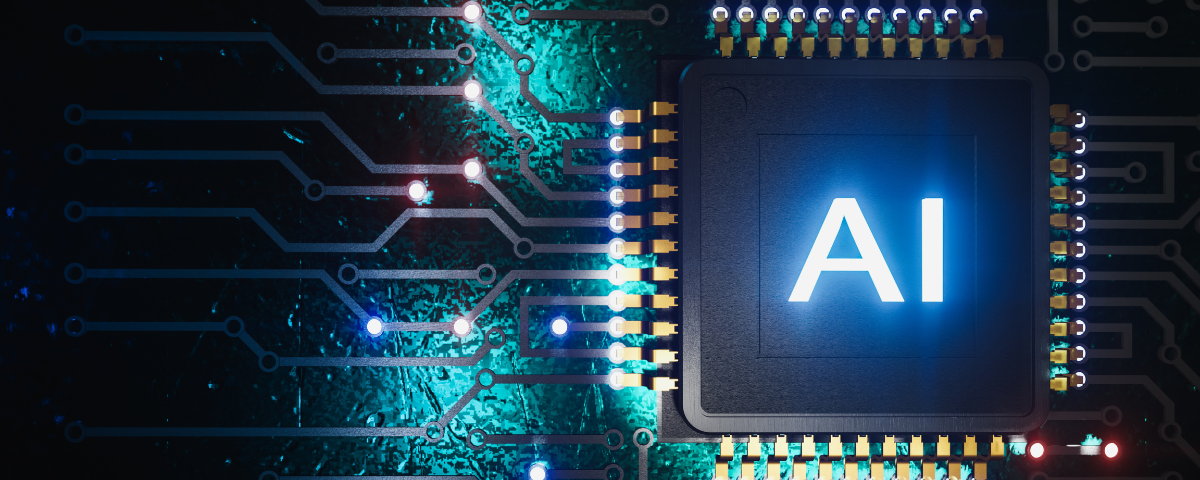While AI modeling is often associated with building machines that can outsmart humans, its true potential lies in harnessing the power of data to tackle real-world challenges. AI modeling has expanded into various industries, including mortgage lending, where it’s making a significant impact.
Understanding the Basics of AI Modeling
AI modeling is like teaching a computer to learn from tons of information. Imagine showing a kid a bunch of pictures of cats and dogs. After a while, they’ll learn to tell them apart, right? That’s kind of how AI works in mortgage, but with financial data.
The AI is fed lots of examples – like spending habits, payment history, and loan details. The AI looks for patterns in all that data. It uses those patterns to make predictions about things like how likely someone is to make their loan payments on time.
Think about it like this: if someone always pays their bills on time, the AI might predict they’ll continue to do so. But, if someone’s payment history is a bit rocky, the AI might flag that as a potential risk.
This is really helpful for things like figuring out the best way to help someone manage their money or whether they can get a loan. AI isn’t about replacing human judgment. It’s about giving people the right information so they can make smart choices about their finances.
Types of AI Models in Mortgage Lending
AI models are changing how lenders approach financial wellness for borrowers. These models use data to learn and improve over time. There are 3 common types of AI models used in mortgage lending.
Machine Learning Models
With the power of AI and machine learning models, financial tools can learn spending habits and help users budget better. These models use data to understand patterns and make predictions about future financial needs. This means users can get personalized help with things like budgeting and debt management.
Think about it this way: you probably already use apps that give you personalized music or movie recommendations. Machine learning in finance works in a similar way. It analyzes past financial behavior to make smart recommendations about how to manage money.
Deep Learning Models
Deep learning models are a subset of machine learning that utilize neural networks with multiple layers to model and understand complex patterns in data. This allows them to learn and improve on their own by automatically adjusting the importance of different inputs.
- Multiple layers: Deep learning models are composed of multiple layers of neural networks, which enable them to learn complex patterns and representations.
- Automatic feature learning: Unlike traditional machine learning models, deep learning models can automatically learn features and representations from the input data.
Deep learning models work by propagating inputs through multiple layers, allowing the model to learn hierarchical representations of the data. This process enables the model to capture complex patterns and relationships in the data.
By using deep learning models, the AI has more context and can understand financial goals and suggest ways to reach them faster. That’s the power of deep learning.
Predictive Analytics
Think about how much easier managing money would be if a tool could predict the future. That’s where the power of AI modeling comes in, specifically with something called predictive analytics. Instead of relying only on what happened in the past, this technology can analyze financial information, spot patterns, and make smart guesses about what might happen next. It’s like having an AI financial advisor by your side.
This can change the game for things like budgeting and debt management. An AI-powered financial tool sees that the user is spending a little more than usual eating out and might suggest some budget adjustments. It’s all about making life easier, less stressful, and setting them up for financial success.
AI Modeling for Mortgage Readiness
AI is changing how we think about financial wellness, and that includes getting ready for a mortgage. Think of AI as a helpful guide that looks at lots of data to understand potential borrowers’ money habits. This guide uses that data to create personalized recommendations.
Assessing Borrower Financial Health
Think about how you currently figure out if someone’s a good bet for a loan. You can look at their credit score, income, and other stuff to see if you can handle it. But what if you could look deeper? That’s where this AI thing comes in.
AI can be used to really help a borrower understand their financial health. Not just looking at numbers, but understanding spending habits, recurring bills, and even things like how much money’s left over after the bills are paid.
Providing Personalized Financial Advice
AI modeling helps financial tools give personalized advice so people can reach their financial goals. This technology can analyze a borrower’s unique financial situation. It looks at things like income, spending, and debt. With this data, AI can create a personalized budget plan. It can also give recommendations to help them get out of debt faster.
For example, the AI might find you’re spending a lot on eating out. It could suggest cooking at home more. This advice can help them save money and stay within their budget.
But AI modeling goes beyond basic budgeting. It can help with debt management too. It can create a plan to pay off debt faster. This might involve suggestions for debt consolidation or balance transfers. The AI can even adjust plans over time as financial situations change.

AI Modeling for Debt Management
AI uses machine learning to look at tons of data points, like income, expenses, and credit score. This lets it create a personalized plan for each individual. It’s kind of like having a financial advisor available 24/7, but without the expensive fees.
AI can do a lot to make managing money easier for consumers:
- Create a budget that really works for their lifestyle.
- Find ways to pay off debt faster, like the snowball or avalanche methods.
- Help with setting and reaching financial goals.
The best part is that AI is always learning and getting smarter. As AI-powered tools are used more, they become even better at giving personalized advice and support to achieve debt freedom.
Automating Debt Repayment Plans
An AI advisor can get to know a person’s financial situation inside and out. This AI uses its knowledge to build a debt repayment plan.
But it gets better. This AI can adjust the plan if things change, like if someone loses their job or has an unexpected medical bill. This is what we’re talking about – using AI for real-world financial wellness. It helps make managing money less stressful and more doable.
The Rise of AI: Embracing the Future
AI isn’t a futuristic concept; it’s transforming the world. The global AI market, expected to be valued at $184 billion in 2024 (nearly double the value in 2021), and will reach an estimated $1,847.58 billion by 2030, according to Next Move Strategy Consulting. Businesses are embracing AI. As of 2024, approximately 72% of companies are implementing AI in their operations.
AI modeling is integral to our technological fabric, creating opportunities. As AI modeling advances, we’ll see more creative and sophisticated applications. From streamlining tasks to fueling innovations, this journey is just beginning.

Conclusion
From financial tools to AI-powered assistants, AI modeling is revolutionizing how we interact with technology. It represents a fusion of human ingenuity and computational power. AI modeling can empower borrowers to make informed decisions on their personal finance by unlocking valuable insights from data.
FAQs About AI Modeling
What is modeling in AI?
AI modeling involves creating algorithms or programs that learn patterns from data. Once trained, these models make predictions or decisions with little human interaction. The process is similar to teaching, with the model acting like a student learning from provided information.
As the AI model ingests more data, it refines its knowledge and improves its ability to perform tasks accurately. Imagine teaching a child to identify fruits; they learn to differentiate based on shape, color, and size through repeated exposure. An AI model trained on vast data learns to recognize patterns, leading to intelligent outcomes. This ability to learn from data is what makes AI so powerful and adaptable.
Can I build my own AI model?
Yes, you can build your own AI model. The process requires a solid foundation in programming, data science, and machine learning principles. Access to relevant data and computational resources is essential. For those new to the field, numerous online courses and tutorials are available to help develop the necessary skills.











